By Dan Weisz
A friend told me about a water hole along the Mount Lemmon Highway. That spot is a naturally occurring bathtub-sized hole in a large granite rock along a rocky stream-bed at about 5800 feet elevation. The water in it has lasted from past rains and the water is currently about two feet deep and very slowly evaporating. As one of what is likely very few current sources of water in the forest, it attracts a large volume of birds during the day. I am sure that mammals drink there during the nights. I spent some time during two mornings there enjoying all of the birds and I have several emails worth of photos to share.
Acorn Woodpeckers are one of the most common and most noticed woodpeckers in the Sky Islands. They live in large social groups and are always talking to each other. For a story at Birdnote, go to https://www.birdnote.org/listen/shows/acorn-woodpecker At the waterhole, some Acorn Woodpeckers would land on neighboring trees before coming in for a drink. Others just landed on nearby trees and then took off for other reasons.
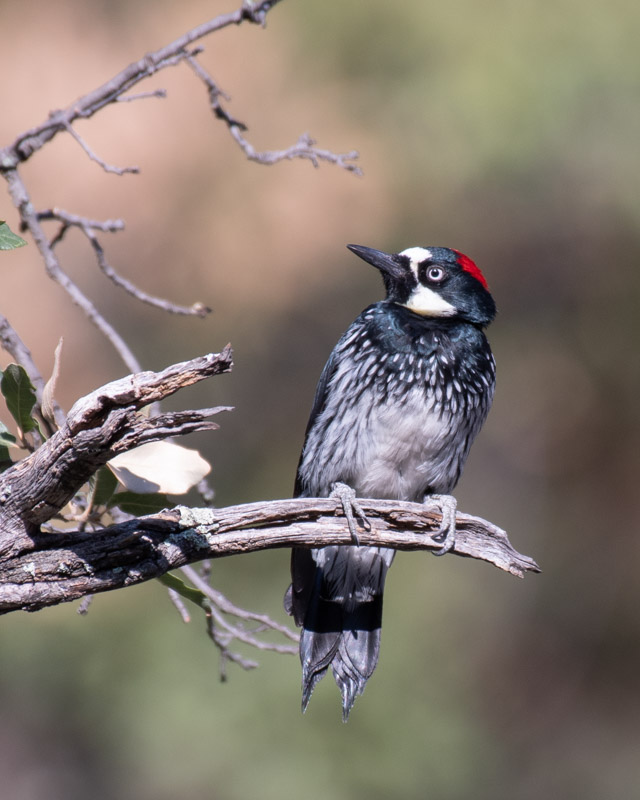
When the Acorn Woodpeckers came in for a drink, they would land on the rocks, and then drop down to the water. (Many of today’s photos show the birds on the rocks). The Acorn above is a female. She has a black cap with the red on the back of her head. The bird below is a male. He has a full red cap.
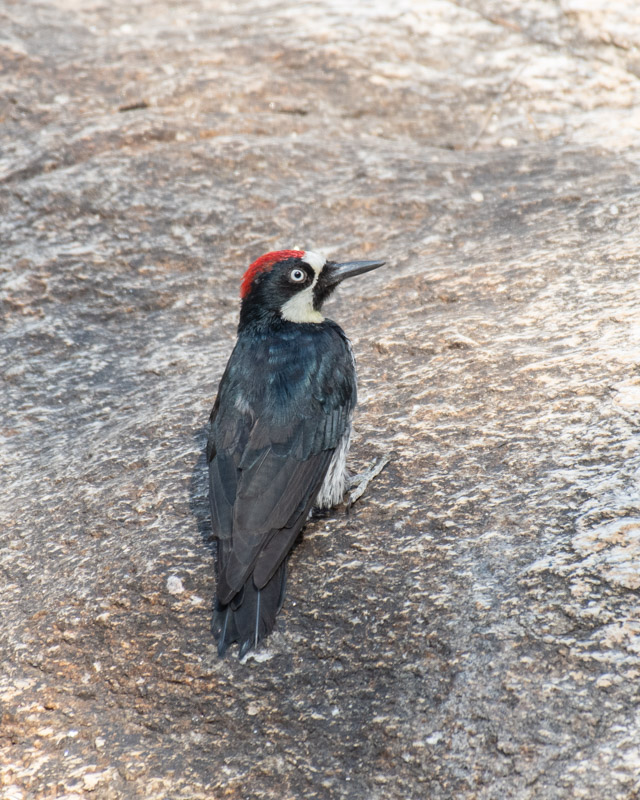
Northern Flickers are large, brown woodpeckers. The males sport a large red “whisker” on their face, at least males in the west do. In the eastern United States, male Northern Flickers have a black whisker and red on the back of their necks. Our western birds are also referred to as Red-shafted Flickers for the red feather shafts on their flight and tail feathers. You see a hint of that in this picture.
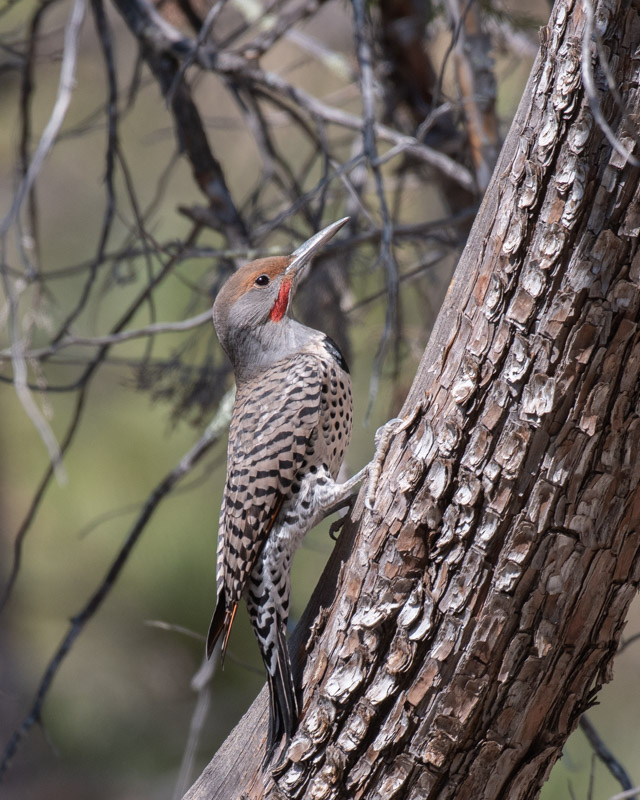
The female Northern Flicker, or Red-shafted Flicker, does not have the red whiskers that the males do. Otherwise, she sports the same black bib and spotted belly that the male does. Both the males’ and the females’ backs are brown with black scalloping.
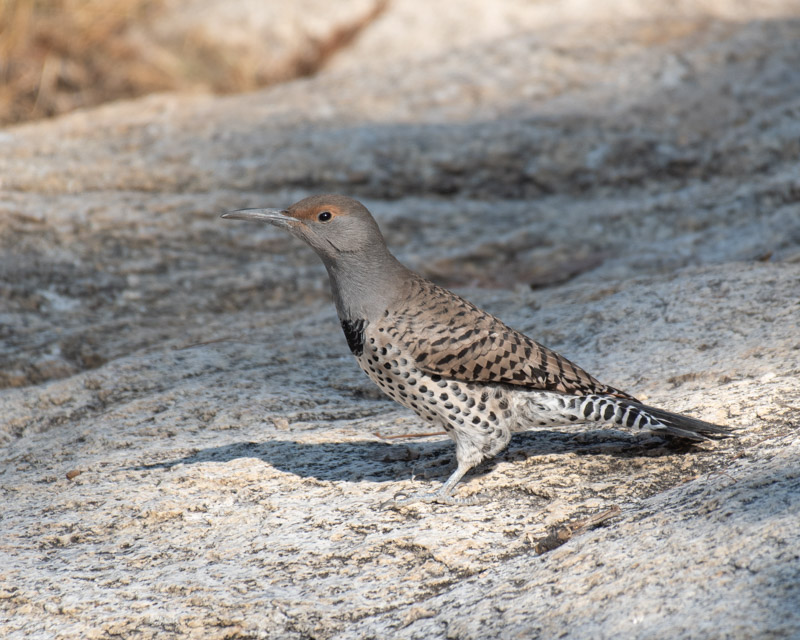
Here’s a male Northern Flicker getting ready to drop in for a drink. We have these birds in the Tucson area in the winter, but in the summer they move up in elevation to get out of the heat. They are often found on the ground as ants are a large part of their diet. In this photo you can easily see a feature that almost all woodpeckers share. See this bird’s toes? Two toes face forward and two face backwards. Woodpeckers have these “zygodactyl” feet that help them cling to trees. Most birds have three forward facing toes and one toe facing backwards. You can see this feature in almost all of the photos in this email.
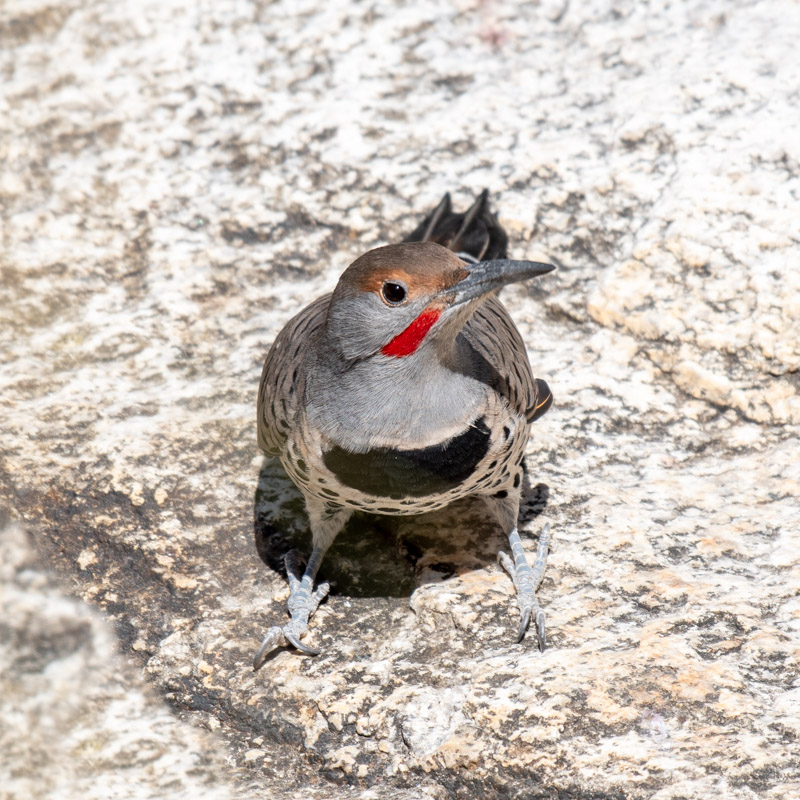
I was happy to see Red-naped Sapsuckers. They are a bird we will see in town during fall migration and in winter. The Acorn Woodpecker and Northern Flickers are year-round residents in southern Arizona. Red-naped Sapsuckers are appropriately named. They have a light red spot on their nape- the back of their neck. They are a member of the sapsucker species, birds who feed primarily on the sap of trees. They will drill a series of holes in trees for the sap much like we humans drill holes in maple trees to get sap for maple syrup.
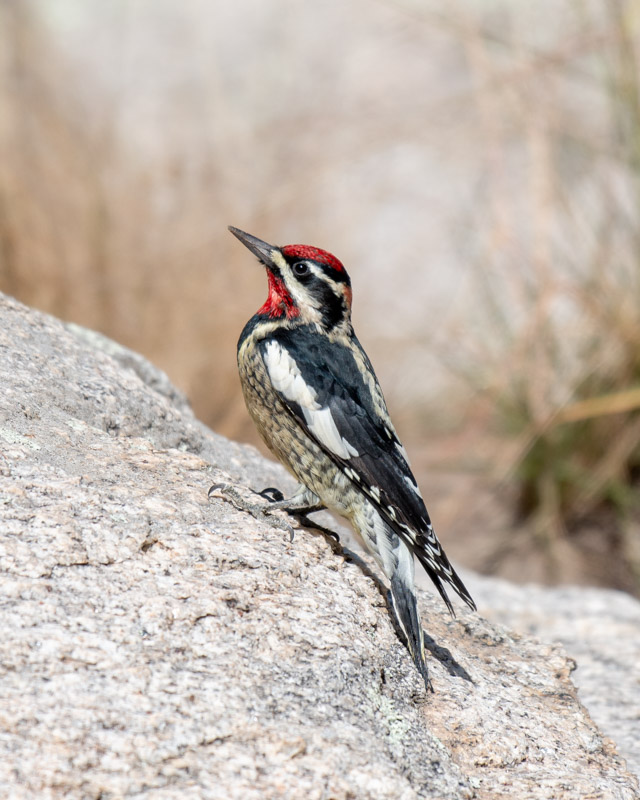
This is a male Red-naped Sapsucker. Males have a full red throat. These birds also have a slight peak to the back of their heads.
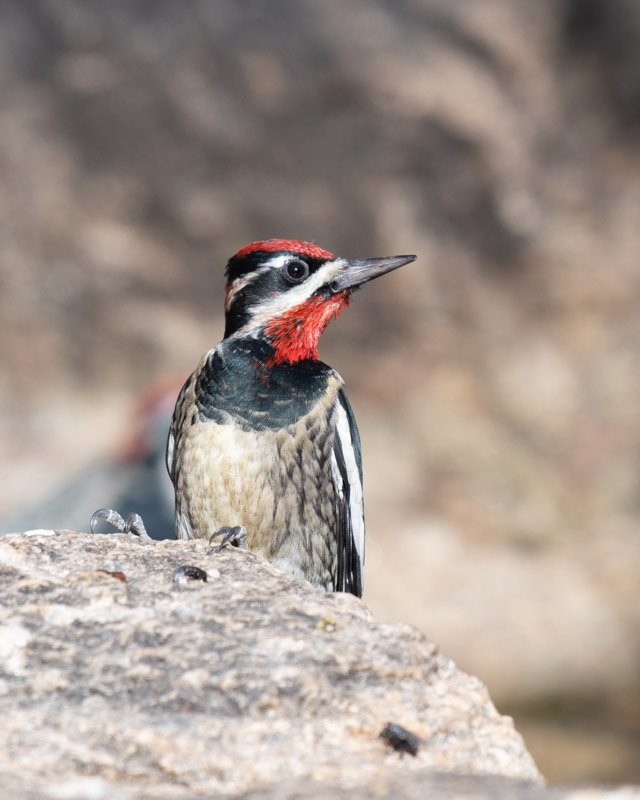
This is a female Red-naped Sapsucker. Her throat is mostly white. She and many of the birds clung to the vertical sides of the rock before and after dropping down for a sip. In this shot, you can see the white bar on her folded wing. Both males and females have that white bar.
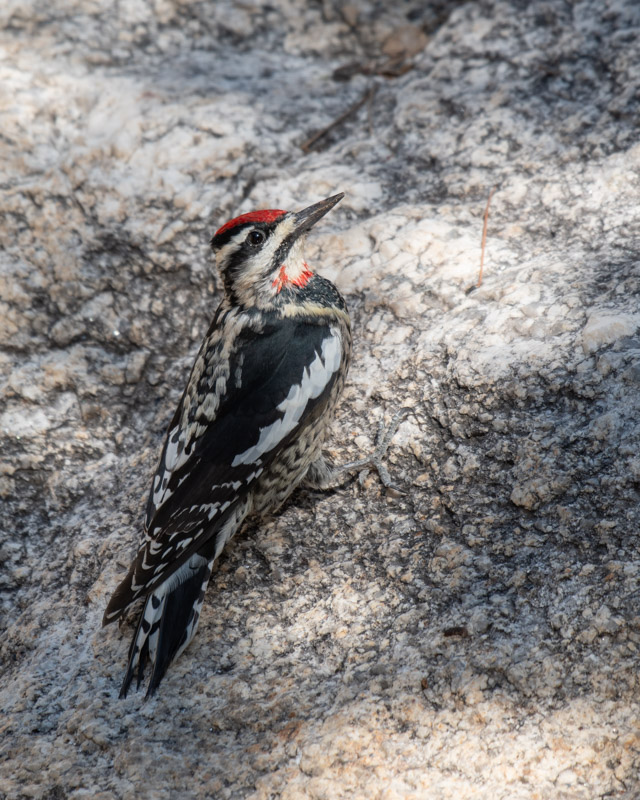
And one last look at a male. In this shot you can more easily see his red “nape”.
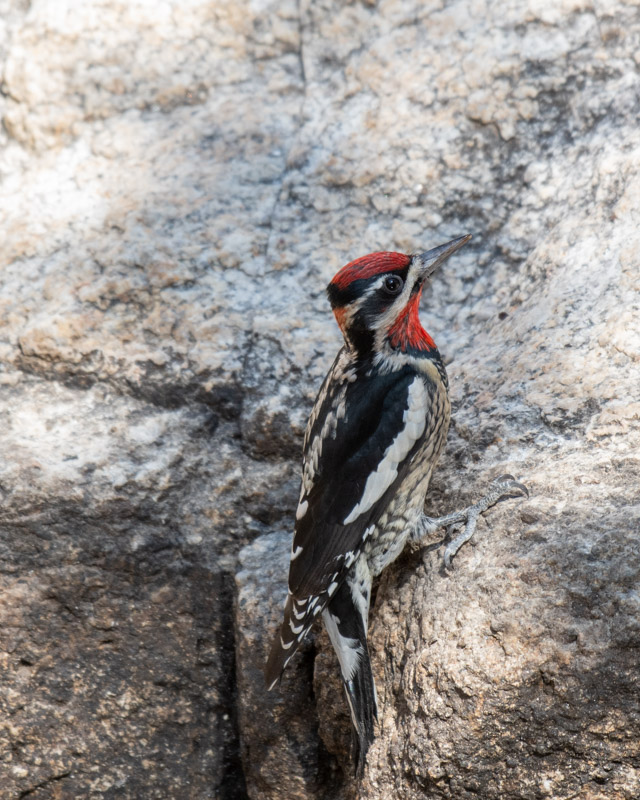
The most common, year-round woodpecker in the Tucson area is our Gila Woodpecker. We also have Ladder-backed Woodpeckers in the desert. So it was nice to see so many other woodpeckers just a short drive from our home a few thousand feet of elevation higher than where we live.
Next, some more birds visiting the water hole!
